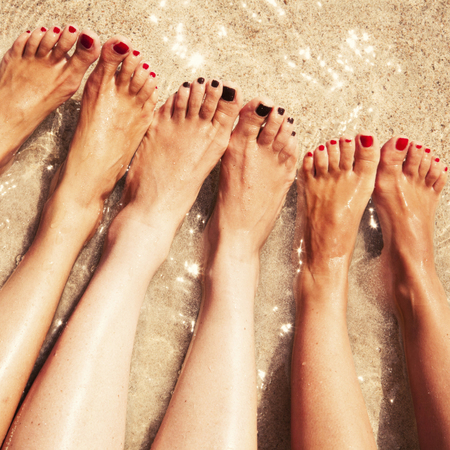Any work that involves walking or standing for long periods of time is hard on the feet — with up to twice your body weight in force applied through your feet and legs with every step. Your feet are taking a lot of force over extended periods of time! Pain is common in the heel, balls of the feet, and arches.
Most foot injuries occur in workers involved in manufacturing, construction, transport and storage, and range from cuts, bruises and sprains from falling objects, and trips and falls, through to overuse injuries such as sprains and stress fractures.
Risk factors
Standing in one spot or walking for more than 4 hours at a time
Overuse injuries are prevalent for people who are on their feet for long periods of time. Proper foot care is paramount to relieving discomfort and preventing more serious injuries from occurring. When your feet are sore and tired you are at increased risk of tripping and falling injury. Supportive footwear and/or orthotics can reduce your risk of injury.
Walking on hard surfaces
Hard surfaces such as concrete lack flexibility and multiply ground force with every step. Workers employed regularly on hard surfaces can benefit from cushioned soles for shock absorption. Custom orthotics may also be useful for additional arch support.
Unsupportive footwear
Shoes that are unsupportive or lack appropriate protection for workplace conditions.
How to reduce your risk
Common overuse injuries among workers include repetitive strain injuries to the Achilles tendon, stress fractures through constant force applied to the feet, arch pain (as arches can be strained through long periods of standing and carrying weight), and heel pain.
These problems can be avoided by:
Wearing supportive shoes
Shoes that are properly fitted with comfortable inners, lower heels and good arch support
are recommended to reduce discomfort and prevent injury.
Changing position regularly
Keep your muscles mobile and to give pressure points a rest. Keeping joints flexible by moving around is just as important as sitting down and having a rest at regular intervals. Make sure you change positions frequently so that any one particular muscle group isn’t getting more strain than another.
Take care of your feet at home
Many foot problems can be prevented simply by cleaning your feet regularly, inspecting them for corns, calluses and cuts, and keeping your nails in good condition. Your feet are more susceptible to injury if you are on your feet all day, so looking after your feet will make your working life easier and pain free.
What can a podiatrist do for you?
Podiatrists are highly-skilled health professionals trained to help prevent, diagnose, treat, and rehabilitate medical and surgical conditions of the feet. Professional care can often benefit both employer and employee.
Podiatric treatment for trades & services workers can include:
Managing existing injuries
If you are suffering from foot pain, we can recommend treatments to provide your feet with more support throughout the day and relieve any discomfort
Biomechanical assessments
We conduct assessments to investigate your posture and the way your lower limbs function. We look to see if you are compensating for any slight abnormalities.
Finding appropriate footwear
The importance of workplace-appropriate footwear shouldn’t be ignored, and for many jobs, safety or protective shoes are mandatory for good reason. We can provide expert advice to ensure you have maximum comfort at work.
Fitting custom orthotics
We can also fit you with custom orthotics to provide additional support and other therapies to relieve the burden of wear and tear.
**Information sourced from the Australian Podiatry Association







